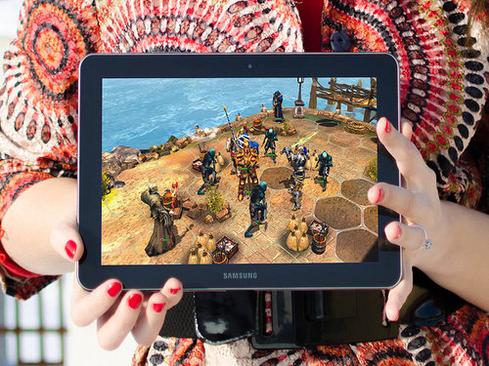Microsoft's Answer To Death By Email: Meet Clutter
Yes, Clutter. This new tool for Microsoft Office 365 users aims to learn which messages are most important to you, and restore order.


8 Classic Video Games Begging For Tablet Versions
8 Classic Video Games Begging For Tablet Versions (Click image for larger view and slideshow.)
Email remains the life's blood of business communication, but all too often, the flow of information becomes clogged by an excess of messages. Microsoft on Tuesday launched its latest attempt to solve this problem: Clutter, a new email feature for Office 365 business customers that learns which emails a user is likely to find important, and moves less crucial messages to the background.
Originally announced in April at Microsoft's Exchange Conference, Clutter relies on Office Graph, a machine learning technology that maps the user's relationship with people, events, documents, projects, and other types of information. Office Graph allows Clutter to recognize that a user has ignored a co-worker's email about his new cat but read and responded to another colleague's message about an upcoming campaign, for example. Observations such as this help Clutter determine which messages to prioritize.
From the user's perspective, Clutter operates something like Gmail's importance ranking, but in reverse; whereas Gmail partitions emails it deems "important" into a secondary folder instead of in the main feed, Clutter puts the important messages front and center, with less important content relegated to a "Clutter" folder.
[Looking to tidy up in other areas as well? Read Facebook News Feed: 4 Ways To Cut Clutter.]
Put another way, Clutter is designed to be a much smarter spam filter. If Clutter concludes that a given message is unimportant, that message won't be deleted and will remain accessible in the Clutter folder.
Clutter will work with a range of clients and devices, including Outlook, Outlook Web App, and devices connected to Exchange ActiveSync. That said, the feature will be disabled by default. Each user controls whether Clutter is activated. Once the feature has been enabled, users won't see an immediate change. Microsoft says Clutter will kick in once Office Graph has collected enough information to "confidently" help users to be more productive.
Clutter won't interfere with any rules the user has already established to organize incoming emails. If messages from certain people are set to automatically route to a particular folder, for example, Clutter will not act on these messages.
Users can turn off Clutter at any time. In May, Office GM Julia White told InformationWeek that company execs understand the stakes if Clutter isn't as good as advertised. "We have to do it right, or people will turn it off and [lose] trust in it," she said, noting that internally, Microsoft has "been testing this stuff with email for years and years."
Microsoft is rolling out Clutter in waves. Those enrolled in the company's First Release program, which lets enterprise users get the earliest access to new products and features, will get Clutter first, with availability for other business users to follow. Microsoft is also initially launching the feature only for English-language customers. Support for additional languages is planned.
Microsoft isn't the only big player that wants to make email cleaner and more useful. Google, for example, recently launched Inbox. Whereas Clutter is part of the existing email interface, adding only an additional folder, Inbox offers a new organizational paradigm.
But Clutter is only one of the Office Graph products with which Microsoft hopes to tame unwieldy inboxes. Delve, a recently-launched Office 365 app, functions as a social feed for one's work life, using Office Graph's observations to show the user information that might be useful. According to Microsoft, the goal behind Delve is to make users feel as though information comes looking for them, rather than the other way around.
Microsoft targets the enterprise with Office Graph, whereas Google is focusing more on consumers with Inbox. A Microsoft rep told InformationWeek that Clutter is only available for Office 365 business customers, and that for consumers, the company has invested in email management features such as Sweep, which lets users delete thousands of messages with only a few clicks.
As we pull out of a difficult time in our nation's financial history, government agencies struggle to meet information technology demands. Agencies must focus on the cloud and a strong information governance program to avoid the sort of attention recently focused on the IRS. Get the Time To Reconsider Enterprise Email Strategy report from InformationWeek Government today. (Free registration required.)
About the Author(s)
You May Also Like







